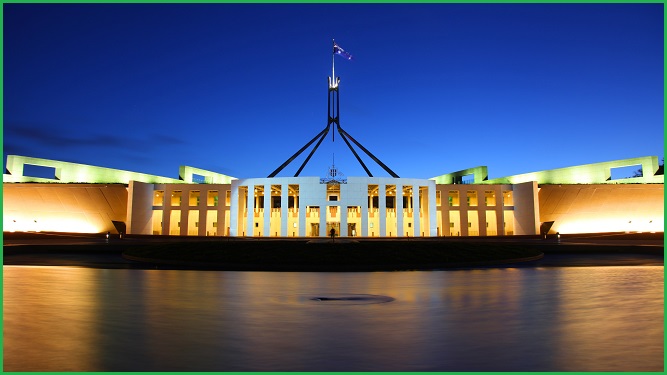The government has revealed its broad plans to support Australian technology and innovation in the 2021-22 budget with tax incentives, the introduction of a digital cadetship program, and big spending on government services.
In his speech on Tuesday night, Treasurer Josh Frydenberg said the past year helped the government better understand our reliance on technology.
“Throughout the pandemic we have seen how quickly Australians have adapted, changing the way we work, shop and communicate – a trend that will only accelerate,” he said.
“Digital infrastructure and digital skills will be critical for the competitiveness of our economy, creating massive opportunities for growth and jobs.”
Frydenberg then pointed to the government’s $1.2 billion digital strategy – most of which was unveiled last week.
He touched on three keystones of that $1.2 billion strategy: developing local artificial intelligence, training cyber security experts, and the creation of a digital cadetship program.
The Treasurer neglected to mention how these three aspects of the digital strategy make up a fraction of the much touted $1.2 billion figure.
A total of $124.2 million will go towards Australia’s AI capability over the four to six years through creating a National AI Centre and four AI and Digital Capability Centres, along with grants for business to work with government on building the technology, and national AI scholarships.
For the next three years, the government is committing an extra $43.8 million to the Cyber Security Skills Partnership Innovation Fund.
And $10.7 million will go toward trialling up to four Digital Skills Cadetship pilot programs.
All told, that’s less than $200 million for the programs Frydenberg deigned to mention on budget night.
What about that billion dollars?
More than half of the headline $1.2 billion will go straight towards what the budget papers refer to as “enhancing government services delivery”.
For My Health Record and the Australian Digital Health Agency, the government is allocating $421.6 million over two years, while a further $200.1 million will help fund a new “enhanced” myGov platform over two years.
The Digital Transformation Agency will pocket an extra $10 million over the next year and the Digital Technology Taskforce gets $3.2 million.
Outside the fabled ‘digital transformation’ of government services are smaller pots of money going toward better use of data, skills, and general cyber security.
The Consumer Data Right rollout will receive $111.3 million in funding over the next couple of years.
The government wants to build a 3D digital atlas of Australia’s geography and is throwing $40.2 million at the project.
Importantly, $42.4 million over seven years will go toward improving the participation of women in STEM through the government's imaginatively titled Boosting the Next Generation of Women in STEM program which will see it co-fund scholarships with industry.
Australia’s overall lack of tech skills will be marginally addressed through the creation of 234 scholarships in emerging technology, at a cost of $22.6 million.
And just $55.1 million will go directly toward cyber security with the security of mobile networks a focus, along with a pilot for centralising the cyber capabilities of government agencies.
Put on the tax breaks
Aside from direct spending – even if it is mostly on itself – one of the government’s biggest levers for implementing its policies is through taxation.
Two tax breaks mentioned in the digital strategy are specifically aimed at easing the burden on Australian tech companies.
First is the ability for firms to run their own assessments on the depreciation of intangible assets like patents, copyrights and – importantly – in-house software.
The change will begin with assets acquired after 1 July, 2023 and is forecast to cost $170 million in tax receipts by the end of the 2024-25 financial year.
Second is a tax offset for certain spending on the creation of video games which is expected to cost just $18.8 million over four years and the criteria for which has not yet been determined.
Broader tax incentives may also help Australian technology entrepreneurs.
Local tech startups will hopefully find it easier to hire high quality talent with changes to Employee Share Schemes (ESS), lengthening the time for tax deferral and increasing the value of shares an employee can receive – and still benefit from deferred tax – from $5,000 to $30,000 per year.
The change is expected to cost around $550 million by the end of the 2024-25 financial year and the government hopes it “will help Australian companies to engage and retain the talent they need to compete on a global stage”.
Finally, there’s the “patent box” Frydenberg proudly announced on Tuesday night.
“Australia has led the world with innovations like Wi‑Fi, the bionic ear and a vaccine for cervical cancer,” he said.
“We want to see more innovation commercialised in Australia. And so tonight, we are launching a new ‘patent box’ starting on 1 July next year.”
The Treasurer’s new box will see income on Australian-made patents taxed at just 17 per cent – quite a bit below the full company tax rate of 30 per cent.
Unfortunately, if Wi-Fi were patented in the second half of 2021, its developers likely wouldn’t see that tax benefit since the “patent box” will initially only cover medical and biotech patents.






